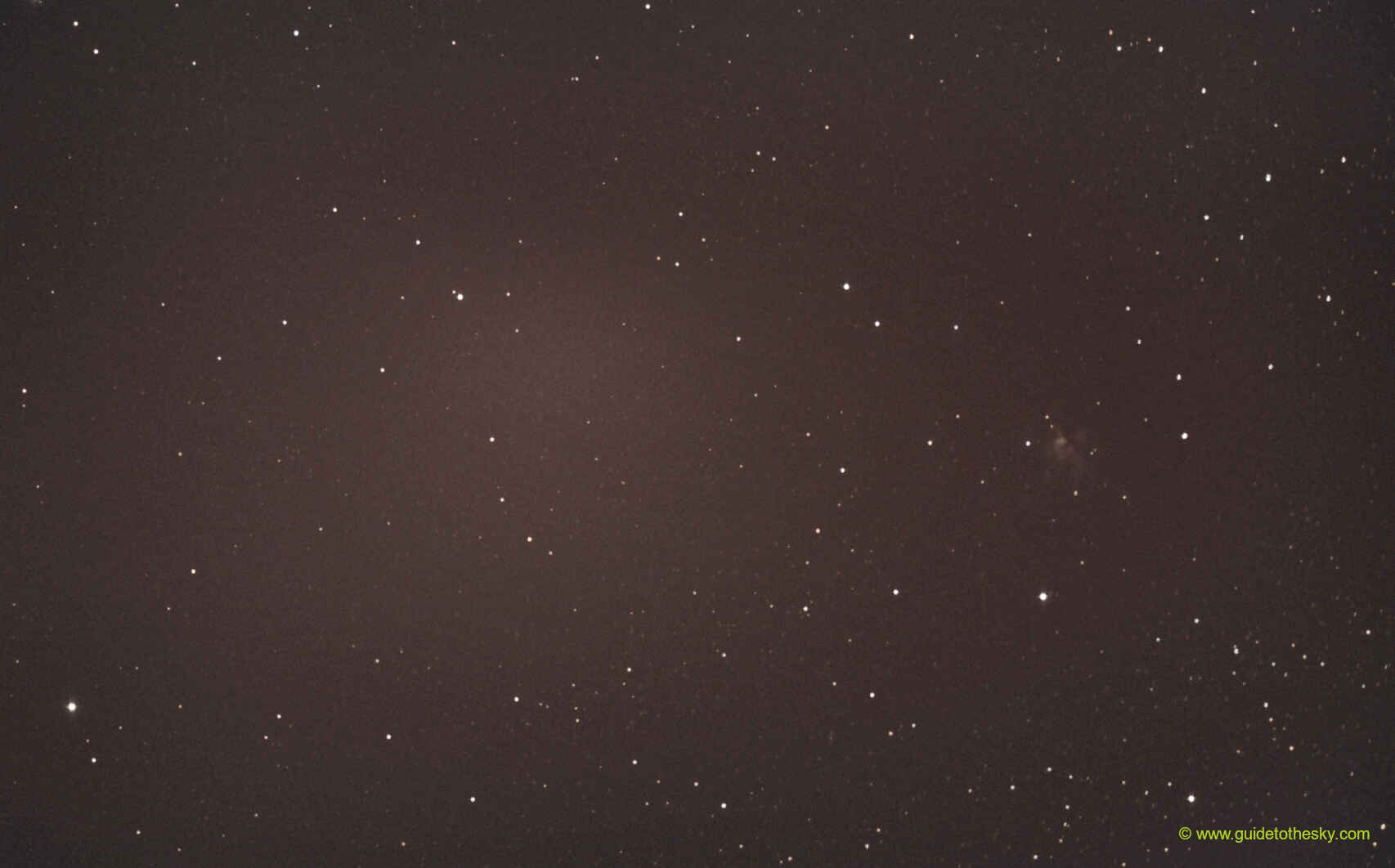NGC 1579 - Perseus
Nebulosa Trífida del Norte

NGC 1579 es una nebulosa de gases, llamada a veces la Trífida del Norte.
Situada a {{ object[0].NGC1579.mesDistances[0].dist }} {{ object[0].NGC1579.mesDistances[0].unit }}. Es una maravilla que cósmica, una guardería de formación estelar donde nubes claras se entremezclan con nubes oscuras, lo que produce una efecto de "desgarro" de ahí su nombre, homólogo al de la constelación de Sagitario en el hemisferio Sur.
Es un objeto dificil de fotografíar por su extremada difusión, requiere tiempos de exposición altos, noches de alto contraste y si es posible algún filtro que mejore el contraste, sobre todo si tenemos cielos con iluminados o nos encontramos en la cuidad. Visualmente, yo no he conseguido barruntarla.
NGC1579 se observa enclavada o muy cercana a la cinta galáctica o Vía Láctea
Situada a {{ object[0].NGC1579.mesDistances[0].dist }} {{ object[0].NGC1579.mesDistances[0].unit }}. Es una maravilla que cósmica, una guardería de formación estelar donde nubes claras se entremezclan con nubes oscuras, lo que produce una efecto de "desgarro" de ahí su nombre, homólogo al de la constelación de Sagitario en el hemisferio Sur.
Es un objeto dificil de fotografíar por su extremada difusión, requiere tiempos de exposición altos, noches de alto contraste y si es posible algún filtro que mejore el contraste, sobre todo si tenemos cielos con iluminados o nos encontramos en la cuidad. Visualmente, yo no he conseguido barruntarla.
NGC1579 se observa enclavada o muy cercana a la cinta galáctica o Vía Láctea
NGC1579 - Nebulosa Trífida del Norte - en la IA
NGC 1579 is a fascinating object in the night sky! Here's what we know about it:
What it is:
- Type: Reflection Nebula
- Also known as: The Trifid of the North
- Location: Constellation Perseus
- Distance: Approximately 2,100 light-years from Earth.
Appearance:
- NGC 1579 is a cloud of gas and dust that is illuminated by a nearby star (or stars) embedded within it.
- It has a distinctive reddish-pink hue, which is characteristic of hydrogen gas being ionized by the energy from the star(s).
- Its nickname, "Trifid of the North", hints at a superficial resemblance to the more famous Trifid Nebula (M20) in Sagittarius, though the two are quite different in detail.
Features and Significance:
- Reflection Nebula: Unlike emission nebulae (which emit light), reflection nebulae primarily reflect the light of nearby stars. The dust particles within the nebula scatter the starlight, causing it to appear brighter and colorful.
- Star Formation Region: NGC 1579 is an active region of star formation. The gas and dust within the nebula are collapsing under gravity to form new stars.
- Studying Star Formation: By observing reflection nebulae like NGC 1579, astronomers can learn more about the processes of star formation, including the conditions needed for stars to form and the effects of young stars on their surrounding environment.
- Relatively Faint: It's not the brightest nebula, so it can be a challenge to observe visually with smaller telescopes, especially in light-polluted areas.
Observing:
- Telescope Required: A telescope is definitely needed to see NGC 1579. Even with a good telescope, it may appear as a faint, fuzzy patch.
- Dark Skies: Dark skies are essential for good viewing. Light pollution will make it very difficult to see.
- Filters: A narrowband filter (such as an H-alpha filter) can sometimes help to enhance the contrast and bring out the details of the nebula.
In summary, NGC 1579 is a beautiful reflection nebula located in Perseus. Its reddish glow and role as a star-forming region make it an interesting object to observe and study.
Más información sobre NGC 1579 en NASA/IPAC.
Mapa alrededor de NGC 1579
Otros identificadores de NGC1579:
"Ced 35" ,"DG 34" ,"LBN 767" ,"LBN 165.38-08.73" ,"NGC 1579" ,"SH 2-222" ,"[B77] 70" ,"[SS62] 19" ,"[TP72] 12" ,"[KPS2012] MWSC 0385",

